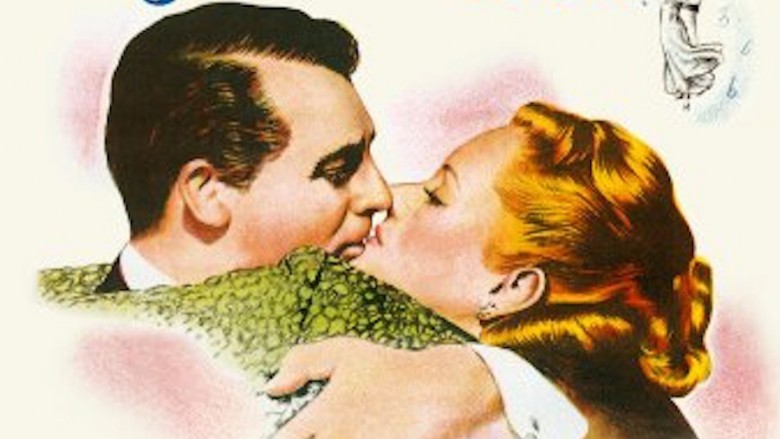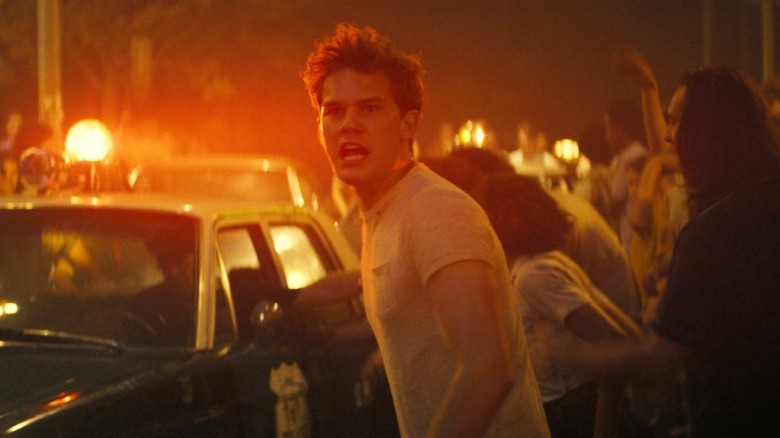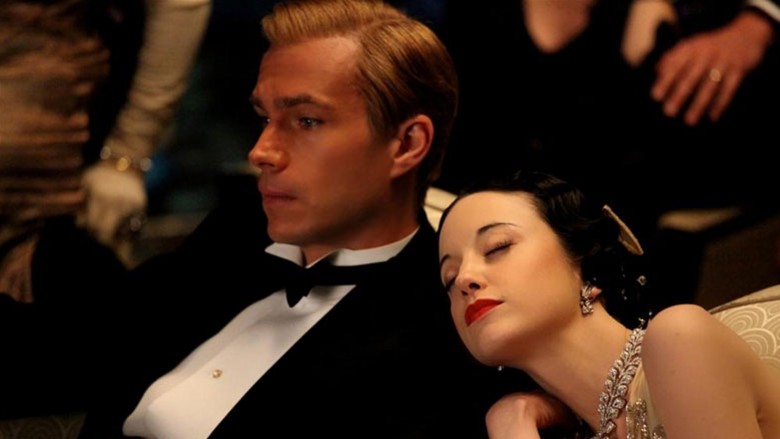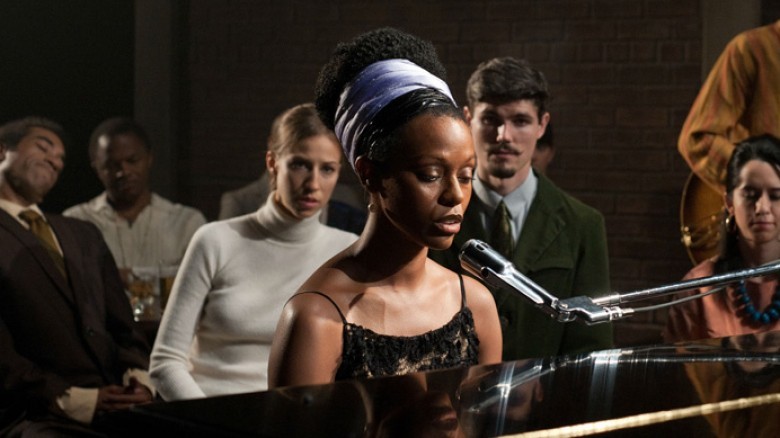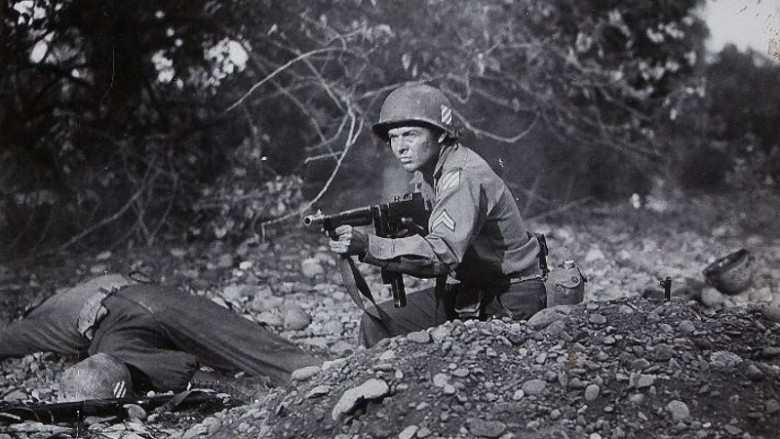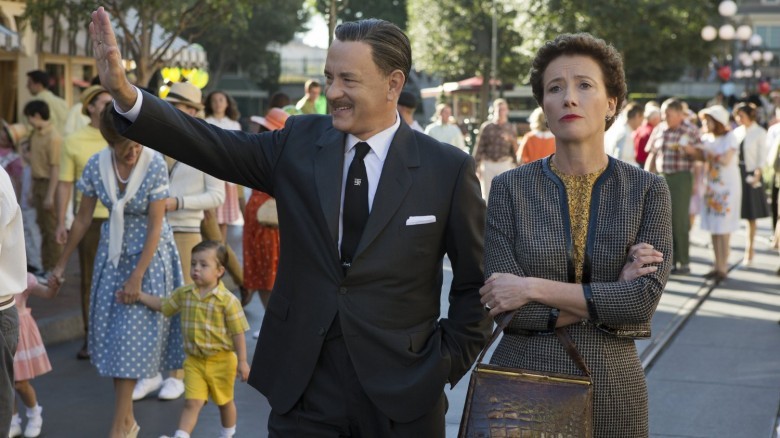Movies Nowhere As Cool As Their Real-Life Stories
When you see a movie based on a true story, you'll marvel at all the exciting moments and think, "Did that really happen?" And the answer is usually a hearty "no." But for every true-life tale that's given a super fake Hollywood ending, there are a few where the real story is far more interesting than its celluloid counterpart.
The Imitation Game (2014)
The Oscar-nominated biopic was careful to include the larger beats of Alan Turing's fascinating life but made his character into a closeted, genius stereotype. Maybe Benedict Cumberbatch has it in his contract to only play genius characters who might be on the autism spectrum, but that's not how Turing was. He was a highly social, friendly guy who was openly gay. Well, as open as a person could be in 1940s England. He was known to flirt with guys, and though he did get engaged to Joan Clarke, he was very upfront with her that it would be a sham marriage. In the end, Turing didn't want to go through with it, and they remained friends till his death.
The most shocking part of the movie, Turing being chemically castrated as punishment for the crime of being gay, was absolutely true. But when the police found out about his homosexuality, in real life, he never tried to hide it. The movie goes on to say that Turing killed himself as a result of the castration, but that's not necessarily true. Turing died more than a year after castration, and while, we're not saying he was psyched about his newly neutered state, he may not have been suicidal over it. It's reported that Turing died of eating an apple poisoned with cyanide. But the police never tested the apple for cyanide, and Turing was conducting experiments with the poison at the time. It's not hard to believe he could have accidentally ingested some of it, but the investigation into Turing's death was completely botched. The police work was so shoddy, he's just as likely to have killed himself as been given a magical poisoned apple from a creepy old lady witch.
Night and Day (1946)
The 1946 film starring Cary Grant as Cole Porter was recognized as sappy and fake even in its time. When Porter read the script, he simply said, ”None of it's true.” When the critics in the '40s are calling a movie too glossed over, you know it's a real BS festival.
In reality, Cole Porter came from a lot of money but worked hard to make a name for himself. He wrote over 800 songs, many of which are still popular today. Also, he was super gay. Night and Day clearly couldn't go into that detail, so they changed Porter's life into a sweet love story. Porter was married for 35 years, but it was always for beard purposes. He and his wife were very close, but to call it a passionate love affair would be a lie.
After Porter crushed both his legs in a horse riding accident, he had to undergo a lot of surgeries and deal with a ton of pain. He had his bones re-broken and grafted together, all while fighting an infection within the bones themselves. Eventually, his leg was amputated. From the strain of losing his wife and mother in the span of a few years and the constant physical pain, Cole Porter ended his life as a depressed alcoholic with only one leg. That story sounds a lot more like Leaving Las Vegas than a bright musical romp about love.
Stonewall (2015)
"A movie about the drag queens, trans kids, and people of color who rioted against the homophobic oppression of the '60s? Sounds great. "
"How about we make it all about a whiny white boy instead?"
"Even better!"
A conversation similar to this must have taken place during the greenlighting process of Stonewall. Director Roland Emmerich, the mind behind the 1998 Godzilla and The Day After Tomorrow, decided to make a film of the historic Stonewall riots that started the gay rights movement. Unfortunately, he took out everything interesting about the event and made it all about a white gay guy who cries the first time he gets a BJ.
The film posits that the riots started because the police raided the bar on counts of prostitution, Judy Garland dying made all the gays pissy, and the white boy sees his old crush be a sleaze, so he decides to throw the first brick. In real life, the bar wasn't just full of prostitutes and hustlers—it was a place for the gay community to come together without fear. But gay bars were raided constantly since public homosexuality and cross-dressing were illegal. Gay patrons were routinely beaten, abused, and arrested for being out of the closet in a small, nondescript bar. On the night of June 28, having nothing to do with Judy Garland's death, the patrons at Stonewall didn't want to take it anymore. Kids from the streets, drag queens, and people who couldn't pass for straight fought the hardest because they had the most to lose.
The riots lasted a few days and started a national conversation about gay rights. In less than 50 years, we've gone from getting arrested for being gay to national legal gay marriage. That's incredible, and Stonewall was a huge part of that. But the movie focuses on a gay kid in the Midwest for half the film, then makes gay sex seem awful. After that, the white kid starts the whole movement then peaces out to let the people of color do the work. It's not a huge surprise Stonewall was a flop, but it was a crazy huge flop, only making $187,674 during its run. Maybe Emmerich will throw a brick through a window because his movie died.
W.E. (2011)
There's only been one abdication of the throne in Great Britain's lengthy history. It was in 1936, when King Edward VIII renounced the crown to marry the thrice-divorced American Wallis Simpson. The idea that Edward chose love over a kingdom is very romantic, but the real story is far more interesting than that. Sadly, W.E., a Madonna-helmed feature, only goes as deep as that first paragraph, then adds a fictional story about a modern woman who's obsessed with Simpson and has a crappy marriage. Guess what's interesting? Almost destroying the British monarchy for a gold digger. Guess what's not interesting? A lame lady who's sad she's married to a doctor.
Shortly after Edward left England, the rumblings of World War II began. The newly crowned King George VI stood firmly with the Allies, gave full support to Churchill, and offered Britain an image of stability in a very turbulent time. All the while, Edward and Wallis were kicking it with the Nazis. Edward once said he didn't want another war, but if push came to shove, "We must be on the winning side, and that will be Germany, not the French." In 1937, they met Hitler with nothing but smiles and Edward generously giving the Nazi salute in far too many pictures. Wallis Simpson even conducted a plot to make herself queen after the Nazis conquered England. W.E. downplays all this as rumor, even though British intelligence papers and quotes and pictures from the would-be king and queen prove otherwise.
But who cares about all that? Edward and Wallis were hot, and some modern lady wants to have an affair. That's the real story!
Hugo (2011)
Hugo is a fantastical film about Georges Melies, the first innovator of film special effects, his slide into poverty, and his rediscovery right before his death. Unfortunately, that's just the side plot. Most of the story is about a made up orphan who lives in a train station while getting chased around by a cartoonish Sasha Baron Cohen villain.
Melies is treated as a side note, when his life story is incredible. He pioneered the art of cutting film to make special effects and created the first sci-fi movie of all time. Melies would make all the sets and costumes himself to create 500 magical shorts. World War I began, and people lost interest in Melies's work, so he abandoned directing, and the French government confiscated over 400 of his films to melt them down. The celluloid was then used to make the heels of soldiers' boots. Penniless, Melies went to work in a candy store in a train station, totally unknown. By the late 1920s, Melies's work received new interest, and he received the legion of honor. But that didn't pay the bills, and by 1932, he was in the depths of poverty. The cinema society kindly put him in a retirement home, where he died four years later.
Some of that is in Hugo, but it's sidelined for more shots of a big-eyed orphan looking sad.
American Hustle (2013)
American Hustle was very popular and did feature some amazing disco-era clothes. We can't take that away from the film. But though you may have enjoyed the characters and performances, the real story it was based on is far more interesting than Jennifer Lawrence's propensity for gross-smelling nail polish.
The Abscam story was a controversial sting operation that outed a lot of politicians as corrupt, but the morals of setup were muddy, at best. Christian Bale's character was based on Mel Weinberg, the straight-up con man who got busted and worked with the FBI to get the charges dropped. Real-life Weinberg was married to Marie, the Jennifer Lawrence character in the film, but had an affair with Evelyn Knight, played by Amy Adams.
At first, the FBI just wanted to catch other scammers like Weinberg, but then a politician fell in their lap. Angelo Errichetti was a powerful state senator in New Jersey and met with Weinberg under the pretense that a rich Arabic business was looking to invest in potentially shady ways. Errichetti offered, "I'll give you Atlantic City. Without me, you do nothing." He then promised to give the company a casino license, if they gave him $400,000 bribe. The FBI figured this wasn't the only corrupt politician, and they went on to catch several officials, including seven members of Congress. In court, defense attorneys claimed the whole scheme was entrapment. Though Abscam busted a lot of real corruption, the means to get there were questionable.
Anyway, American Hustle would rather focus on whether or not Amy Adams and Bradley Cooper will bone and how they can fit in another improvised monologue from Lawrence. Even the drama of the wife was downplayed, as the real-life Marie killed herself in 1982 after constant threats from Weinberg. But hey, Christian Bale looks funny with a weird wig, so let's make him a nice guy.
Nina (2016)
Nina was criticized for a million reasons, and they're all valid. Zoe Saldana isn't the right choice, her makeup looked awful, but most importantly, why would they pick just that part of her life to dramatize? The film focuses on the last years of Nina Simone's life and her relationship with her assistant-turned-manager Clifton Henderson. Though the film has brief flashbacks to some of the bigger moments of her life, there's little about the things that made her incredible.
Nina was a child prodigy who studied classical piano and skipped two grades. When she went into pop music, she used her status and became an activist for civil rights. Many of her songs were banned because of their unfiltered messages. On the dark side, she also abandoned her only daughter to live in Libya for a year only to come back and abuse her. Around this time, she was diagnosed with bipolar disorder, which she struggled with for the rest of her life. The movie barely touches on any of this, which did not please Nina's living daughter, who openly criticized the film.
The movie even gets the details of Nina's last years wrong. Nina tells a quasi-love story between the elderly Simone and her new companion Henderson. In real life, Henderson was gay. There was no romantic interest. But for a movie that got all the details, casting, story, and even makeup wrong, it's ... still really, really bad.
To Hell and Back (1955)
Audie Murphy was a real-life war hero and the most decorated soldier in World War II. After his amazing efforts with the Army, Murphy's memoir To Hell and Back was a hit, and the studio wanted Murphy to star as himself in the movie adaptation. Murphy agreed, and To Hell and Back was Universal's highest-grossing film till Jaws came along.
But Murphy had to tone down his life story for the film. Not because of the Hays code or modesty of the times. No, he was just such a badass in real life it would have seemed unbelievable on film. The movie includes a major battle where Murphy stood on top of a burning German tank while he took out rows of the enemy. But that was after he already took over a German tank singlehandedly in the early days of the army. He earned three medals in three months in 1944 and still had more butt kicking to do.
This next story sounds like it might get cut from a Stallone film for being too impossible. Murphy's unit encountered a hill full of German machine gun nests. Murphy decided to go it alone, but his best friend insisted on coming along. After taking out several enemies, the Germans intimated that they were going to surrender. When the best friend stood up to accept their white flag, the Germans violently gunned him down. After probably screaming "NOOOOO!!!!" to the heavens, Murphy went on a rampage. All alone, he picked off German after German, blinded with rage by the death of his friend. In the end, he secured the hill for the Allies and probably said something cool like "Auf wiedersehen, a-holes" after he shot the last Nazis.
Saving Mr. Banks (2013)
Saving Mr. Banks tells the story of Walt Disney making the film version of Mary Poppins while the irascible PL Travers learns to love his vision. Though it's clear that Disney and Travers don't get along in the film, in real life, it was even worse. Travers hated everything: the songs, the cheery tone of the film, the animation. She even complained about the weather in Southern California. To research the role, Tom Hanks (who played Disney) asked Richard Sherman, co-writer of Mary Poppins's songs, what he thought of Ms. Travers. "Oh Tom," he replied, "she was a bitch."
In the film, Travers has no children, but in real life, she had one adopted boy. She refused to take the orphan's twin brother, and after finding out that kids need love and attention, Travers sent him off to boarding school. She didn't even tell him he was adopted until his twin brother made an unexpected visit to their house when he was 17. Travers's family members said, "She died loving no one and no one loving her."
In the end, Travers never liked Mary Poppins, and after bursting into tears at the premier, she said the film was "all wrapped around mediocrity of thought, poor glimmerings of understanding." After her awful experience, she vowed to never work with Disney again. Telling the story of the meanest old lady to ever write children's books sounds a lot more interesting than Saving Mr. Banks's sanitized sweetness.
The Walk (2015)
Man on Wire is a fascinating documentary about the strange French acrobat who walked a tight wire between the Twin Towers. After the doc received universal praise, Robert Zemeckis decided to dramatize the story in The Walk. Why? Probably because he wanted to use some cool Imax special effects to stoke everyone's fear of heights during the titular stroll. Though The Walk received good reviews, nearly every critique states that the first half is pretty boring, but the effects of the walk are incredible to see.
And yet the unvarnished documentary manages to be never boring! There are no special effects, just interviews and grainy footage from the real thing, and audiences were brought to tears of joy by this tale of triumph. The story about a man who nearly at random decides to travel to another country and break laws to possibly die publicly between two of the tallest buildings in the world should never be dull. Though the real walker Philippe Petit is certainly a character, Joseph Gordon Levitt comes off as a weird, less sexual Lumiere with a worse accent. In a case where the real-life story has already been made into an Academy Award–winning film, don't try to fancy it up with your CGI.


